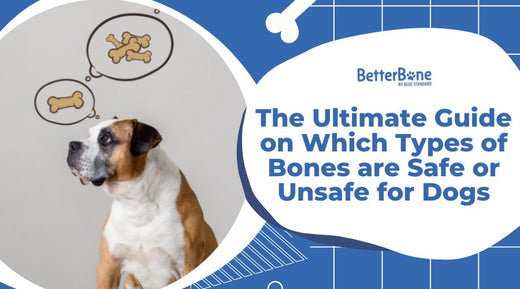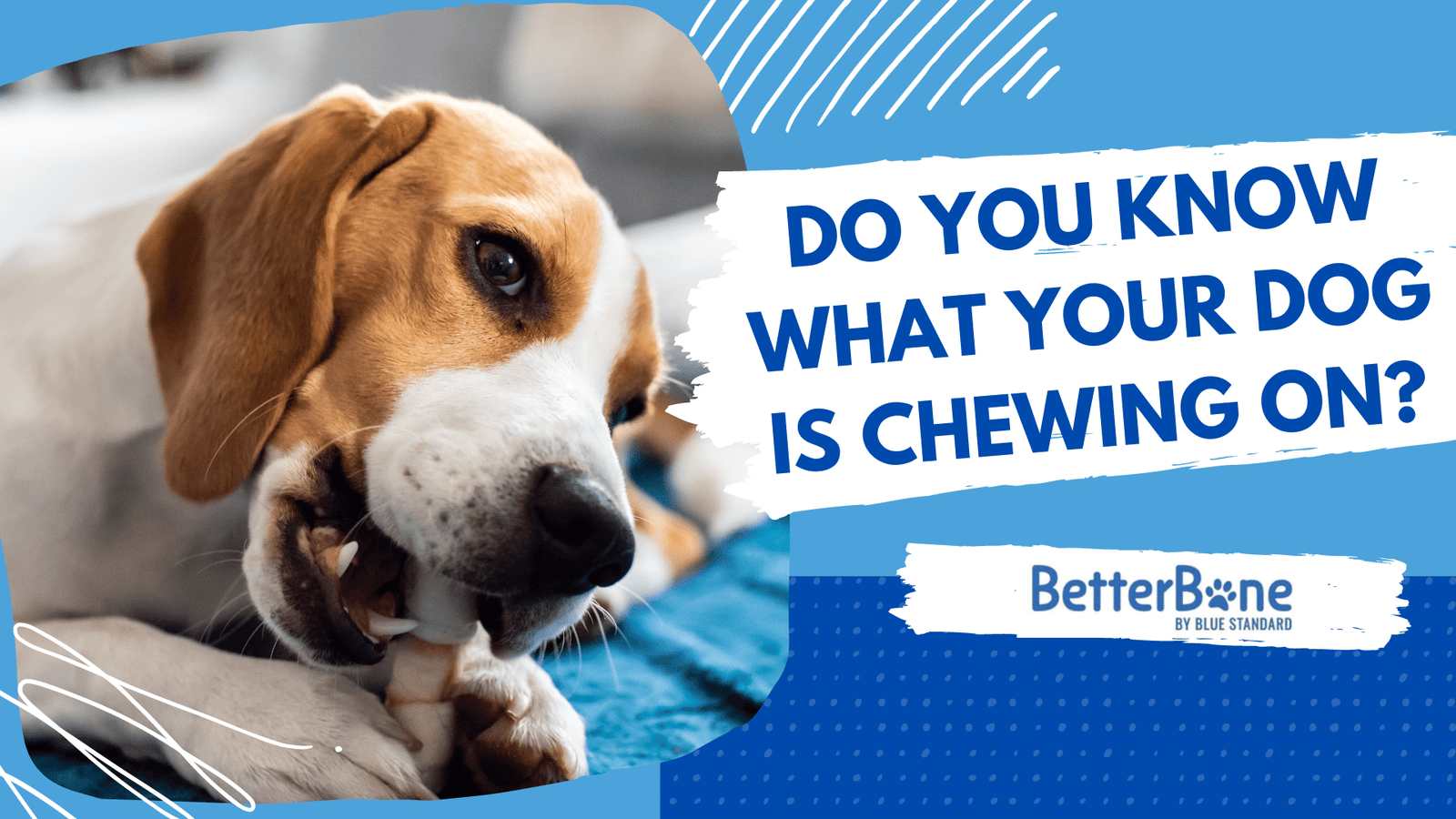Hey fur parents! When it comes to bones for dogs, there are a lot of choices out there. It's normal to ask which ones are the safest? In this blog post, we'll discuss types of bones that are safe and unsafe for dogs. We will also provide some tips on how to choose the safest ones for your pup.
Buckle up and prepare to keep your dog healthy and happy with this ultimate guide!

The health benefits of giving your dog bones
Chewing is a normal dog behavior. Dog bones can provide mental stimulation and keep your dog's teeth clean. Let’s take a closer look at the benefits of chews and bones for dogs:
-
Puppy teething pain is relieved by dog bones.
Teething puppies frequently feel the need to chew in order to relieve their discomfort. Puppy toys and bone chews can provide a constructive way for your puppy to relieve teething pain.
-
Jaw strength is improved by chewing on dog bones.
Dogs have a natural desire to chew in order to stimulate their jaw bones, as dog food diets do not provide enough jaw bone stimulation to keep dogs satiated. Dog bones can help prevent destructive chewing and provide adequate jaw exercise for pets.
-
Dog bones are beneficial to your pet's dental health.
Chewing bones, according to veterinary dental experts, can help keep your pet's gums healthy by removing tartar and scraping bacteria from the teeth.
-
Dog bones provide mental stimulation for your pet.
Dog bones not only keep your pet entertained, but they also provide mental stimulation, which is essential for your pet's brain's growth and development.
There’s a common misconception about dogs and bones.
Dogs and bones appear to be a natural match. That's why you see dogs gnawing on juicy bones in so many comic strips and movies.
But as any pet parent knows, not all bones are created equal. In fact, some bones pose health and safety risks to your dog.
Unsafe Dog Bones and Risks Associated
When feeding bones, keep these guidelines in mind:
- Small raw bones that can be swallowed whole or pose a choking hazard, such as a leg bone, should not be fed. Splinters are more likely to form when bones are cut.
- Feeding raw pork or rib bones is not permitted. They splinter more easily than other types of bones.
- Any home-cooked bones are drained of their nutrients. Additionally giving your dog cooked chicken bones, which are softer than raw ones, can splinter and cause injuries.
- Inedible Nylon Bones, when ingested, can cause choking or blockages so prompt action is essential. Read
- Avoid Rawhide Bones as they can cause can cause choking hazards, gastrointestinal blockages, and digestive irritation. Several companies were forced to recall their rawhide chews after the product came into contact with chemicals that made dogs sick. We go into more detail here on reasons not to buy rawhide bones for puppies.
- Dogs should only chew on recreational bones because they are not intended to be eaten. These can include large femur or hip bones from bison or beef that are marrow-filled.
Types of bones that are safe for dogs
We’ve already laid out that some kinds of bones can actually be dangerous for dogs, causing choking or other injuries. So, what are the safest types of bones for dogs?
1) Raw cow bones
When used properly, raw bones from cows and bison are generally safe. It's best to know where your bones come from, so buy raw bones from a butcher who uses locally sourced meat. Freeze them and thaw them one at a time before giving them to your dog.
2) Raw bison bones
Raw bones from large animals such as bison or elk, are beneficial to your dog's health in a variety of ways. They're one of the healthiest treats you can give your dog as long as you keep an eye on them while they're chewing.
3) Non-Rawhide Alternatives
You can opt to purchase acceptable rawhide alternatives for dogs. Bully Sticks and Salmon Skin bones are some examples of non-rawhide bones you can safely give your dog.
For more great alternatives, check out 5 Non-Rawhide Bones That Will Change Your Dogs’ Quality of Life.
Topping the list is BetterBone ORIGINAL Sustainable and All Natural Dog Bone. Made from two all-natural, and 100% sustainable ingredients, the BetterBone helps to promote dental hygiene through our unique trident-shaped design, all while being non-toxic, hypoallergenic, and non-splintering.
As you can see, there are many rawhide alternatives for dogs, but it's important to remember that there is no such thing as a completely safe chewing treat. Keep an eye on your dog whenever he or she is chewing on a treat.

Tips on how to safely give your dog a bone
If you want to give your dog a bone to eat or chew on, follow these guidelines to ensure their safety.
- Monitor chewing. Don't leave your dog alone to chew on a bone. They may bite off too much and choke, or they may gnaw too aggressively and injure themselves.
- Remove gnawed-down bones. Splintering becomes an issue if your dog chews a bone all the way down to the brittle part. A bone that has been chewed down too small also becomes a choking hazard.
- Do not give bones to a dog who has recently had restorative dental work. These dogs are prone to tooth decay and dental problems.
- Do not feed your dog only bones that can be swallowed whole.
- Give your dog bones that are at least as long as their muzzle. This will make swallowing impossible for them.

Is it worth it to give your dog a bone?
The answer to that question largely depends on the size and type of bone you’re providing. Be sure to supervise your dog when they’re gnawing away at their new chew toy, and if in doubt – don’t give them a bone!
There are plenty of other fun and safe toys out there for your pooch to play with. But if you do decide to let them indulge, just make sure it’s not one of these risky bones.
For your best bet on the safest and most sustainable dog bone in the market, BetterBone, Winner of the Dogster 2022 Editor's Choice dog toy of the year, is available online.








